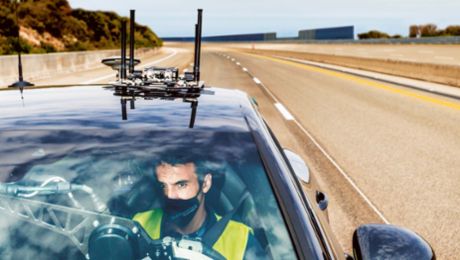When it launched in 1994, it became both the world’s fastest estate and the first Audi to smash the 250 km/h barrier. The Audi RS2 Avant combined the space of a family car with a very special, turbocharged driving experience – and it was developed collaboratively by Audi and Porsche. Ever since Ferdinand Porsche established his design engineering office in Stuttgart in 1931, the name Porsche has been closely linked to customer development projects. Through Porsche Engineering, a 100 per cent subsidiary of Porsche AG, this tradition has proved a longstanding success, with the team providing innovative solutions and a high degree of expertise in digitalisation.
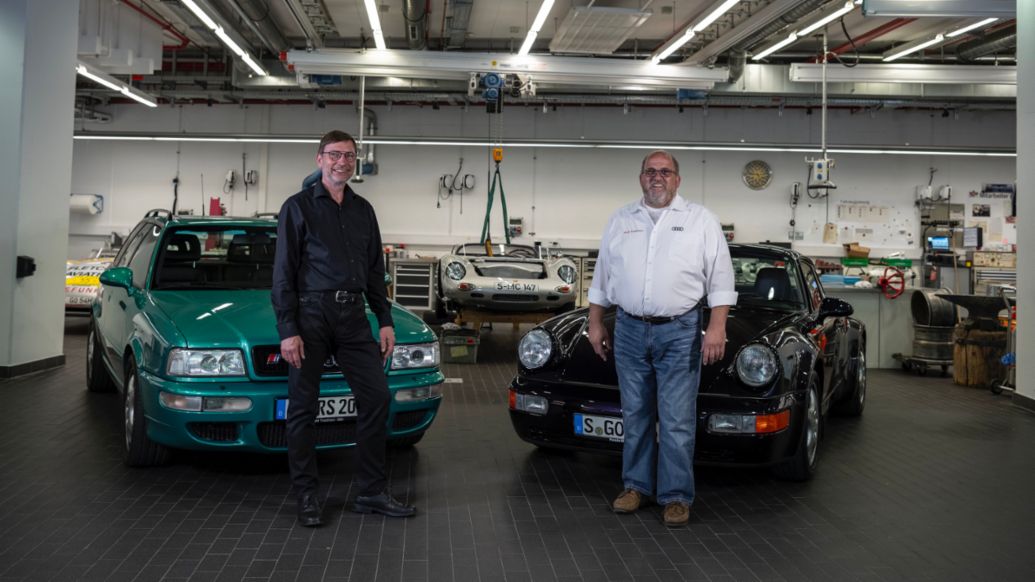
Back in the Nineties, external development projects were keeping the Porsche team busy during economically challenging times. So when Ingolstadt-based Audi came up with the idea for a car to boost its image and keep up with the BMW M3, it turned to Porsche. The collaboration resulted in the RS2 Avant – and an opportunity for Porsche to share everything that is special about the brand with Audi customers. Twenty five years after the last RS Avant was produced, Ralf Friese, a corporate historian at Audi, meets Michael Hölscher, who was head of the RS2 project at Porsche, at the Porsche Museum in Zuffenhausen. Friese arrives in a Tropic Green RS2 from Ingolstadt, while the Porsche Museum has wheeled out its Viola Metallic 964. Components from both the 964 and 993 generation of the Porsche 911 were used in the RS2, including the indicators, fog lights and the semi light bar.
Hölscher – who has clocked up 32 years at Porsche – describes how the RS2 project came about: “A few years earlier, we had created the 500 E model together with Mercedes-Benz and this had boosted our profile as a development service provider thanks to fast, high-quality results. Today, the brand can look back on 90 years of customer developments,” he says, walking round the record-breaking Audi. In 1993, Audi had announced the high-performance sports estate at the IAA International Motor Show in Frankfurt am Main and the car launched the following March – on time, despite a tight schedule and budget. In what were economically challenging times, the project was a hit.
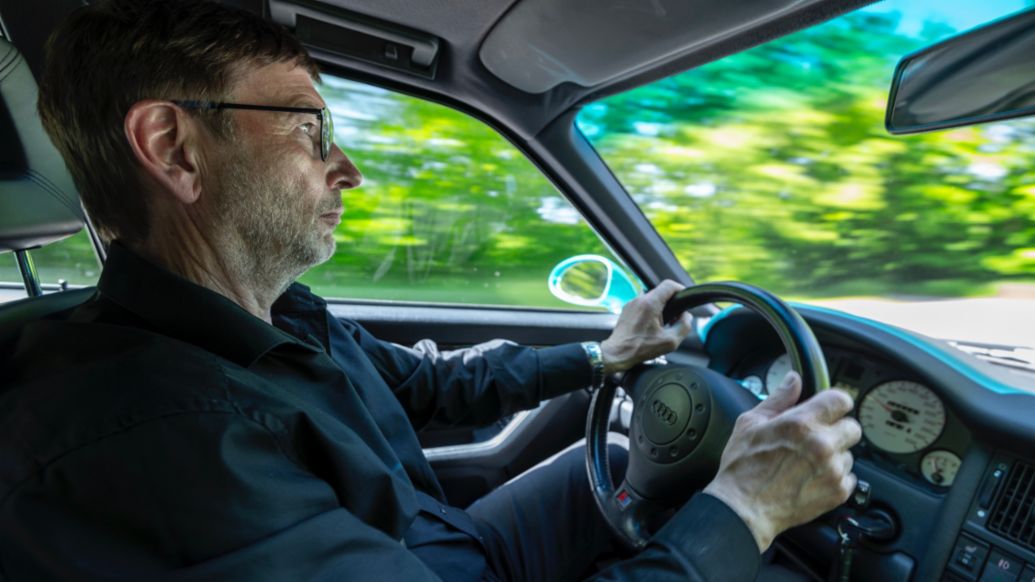
“I’m delighted to drive this beautiful car” continues Hölscher. “With a relatively low production number of 2,891 units, it is a rare sight nowadays.” His team produced the RS2 in Zuffenhausen’s historic Rössle building – the same site where the Mercedes-Benz 500 E was built 30 years ago. Audi provided painted body parts and add-on parts and Porsche took care of the rest, with the two partners managing the logistical challenges with ease. “We were responsible for new parts and development services, while Audi took care of body parts and components that could be transferred from other models. It was an exciting collaboration that brought about nothing but benefits for both companies,” says Hölscher.
The estate – with a 2.2-litre straight five-cylinder engine, all-wheel drive and 315 PS – proved controversial to some because of its turbocharger. “Back then and to this day, the strong, design-based turbocharger lag puts a driver under a certain amount of pressure. Quite a few drivers were not terribly fond of the sudden push, while proud RS2 owners have always loved the turbocharger. The turbocharged engine’s response characteristics are sensational, most of all from the lower engine speed range,” Hölscher explains, as he gets behind the wheel of the Audi and the pair – both motorcycling fans – head for a drive along the former Solitude racetrack, a winding course west of Stuttgart. For Friese, it’s his first time driving a 911 and he later describes his outing in the 964 as a “completely new driving experience”. “A whole new world for me,” he grins, visibly thrilled.
Inside the RS2, Hölscher recalls the Porsche parts that were integrated into the Audi or developed from scratch in Zuffenhausen: the 17-inch light-alloy wheels borrowed from the Cup car, the exterior mirrors with their new mirror base design, the red high-performance brakes, Porsche lettering in the RS logo, the front and rear bumpers, dials and the door openers. “Around 20 per cent of the RS2 stems from Porsche,” he estimates. His team fundamentally re-engineered the engine with new parts. “We found it essential to make the Porsche character immediately noticeable and the associations clear.”
“The RS2 was the first Audi that was not electronically limited, even though it reached speeds of more than 250 km/h. The speedometer scale goes up to 300 km/h, yet the vehicle’s top speed is 262 km/h,” continues Friese, a historian who has worked at Audi Tradition for 14 years. “The speedometer goes up to 300 km/h and the car maxes out at 262 km/h,” he adds, raving about the family sports car’s longitudinal dynamics, while driving through Stuttgart’s surroundings in the classic 911. The estate sprints from a standstill to 100 km/h in 5.4 seconds and generates a maximum torque of 410 Nm. As a result, Hölscher delights in the tight turns that make up the former racetrack at Glemseck near Leonberg – as does Friese, in the Porsche. Both remain silent until the end of the trip, immersing themselves entirely in the cars’ rhythm – one enjoying the turbocharger, the other his first ride in a 911. It proves to be a journey through time for them both.
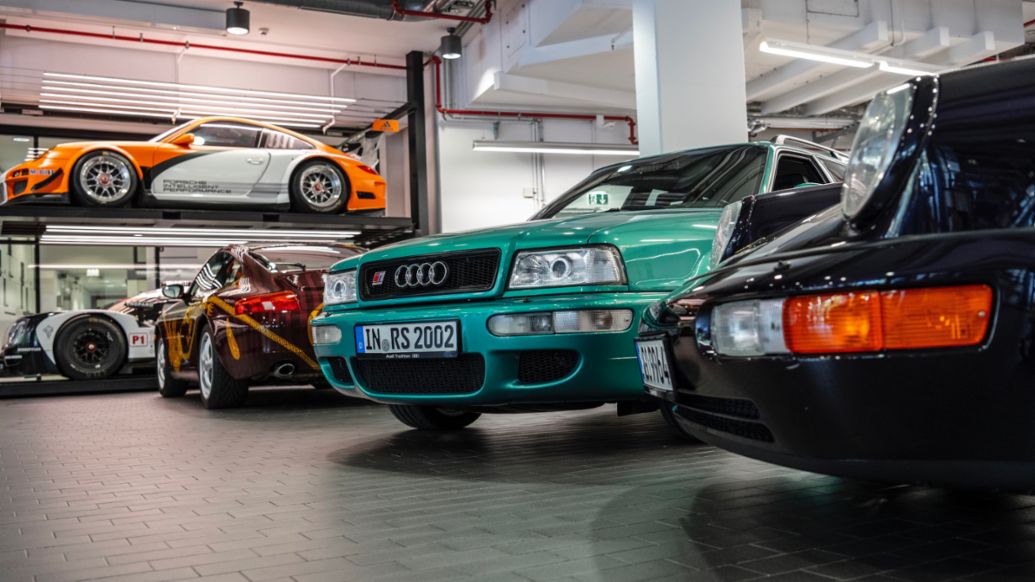
“The outing was great fun. It seemed like old times, more than a quarter of a century ago. It’s marvellous to experience how this car can still keep up with contemporary models – and it does so in a very sporty fashion,” says Hölscher, as he sums up what was once the world’s fastest sports estate – a car that many still refer to as the ‘Audi Porsche RS2’.
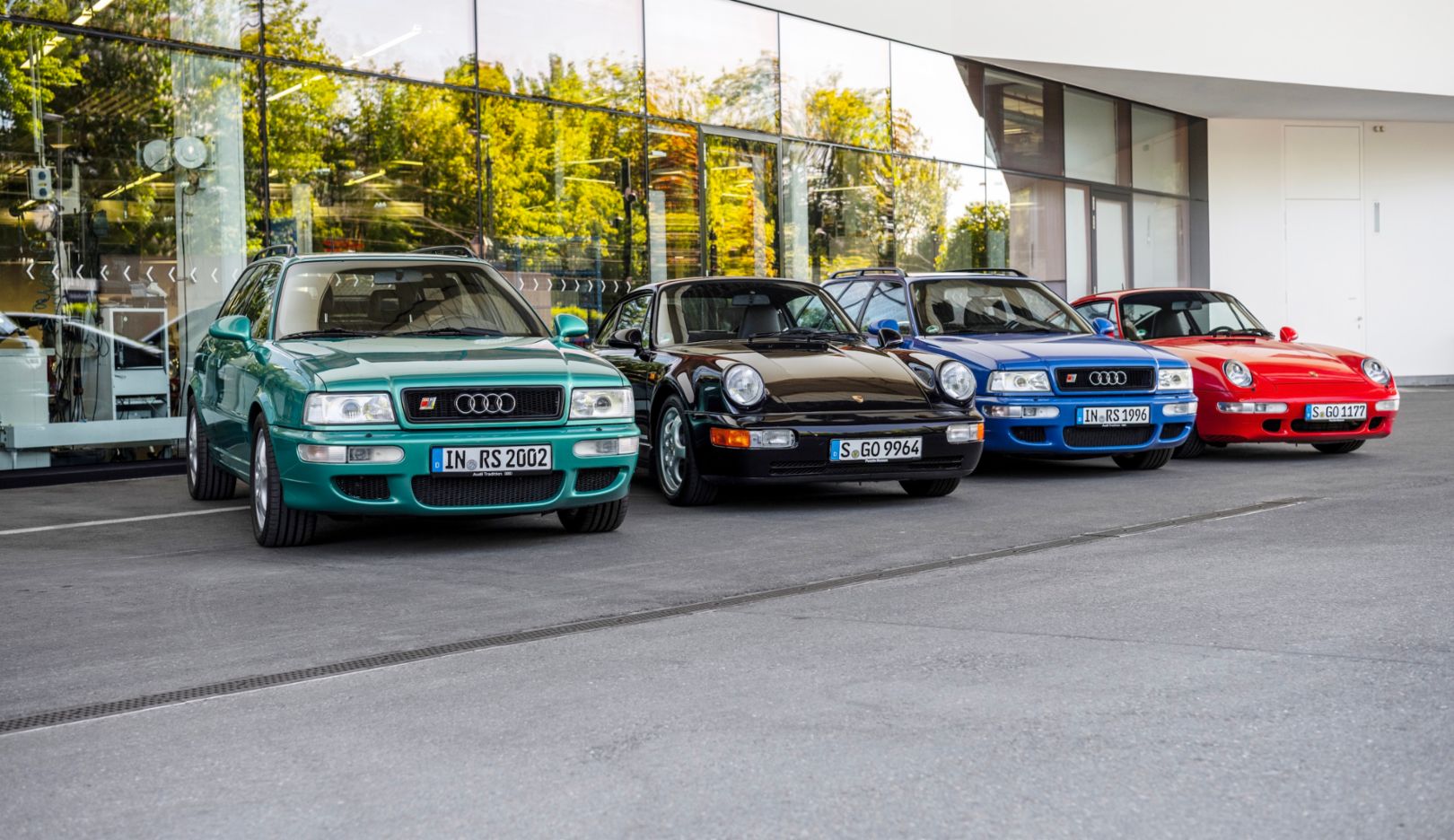
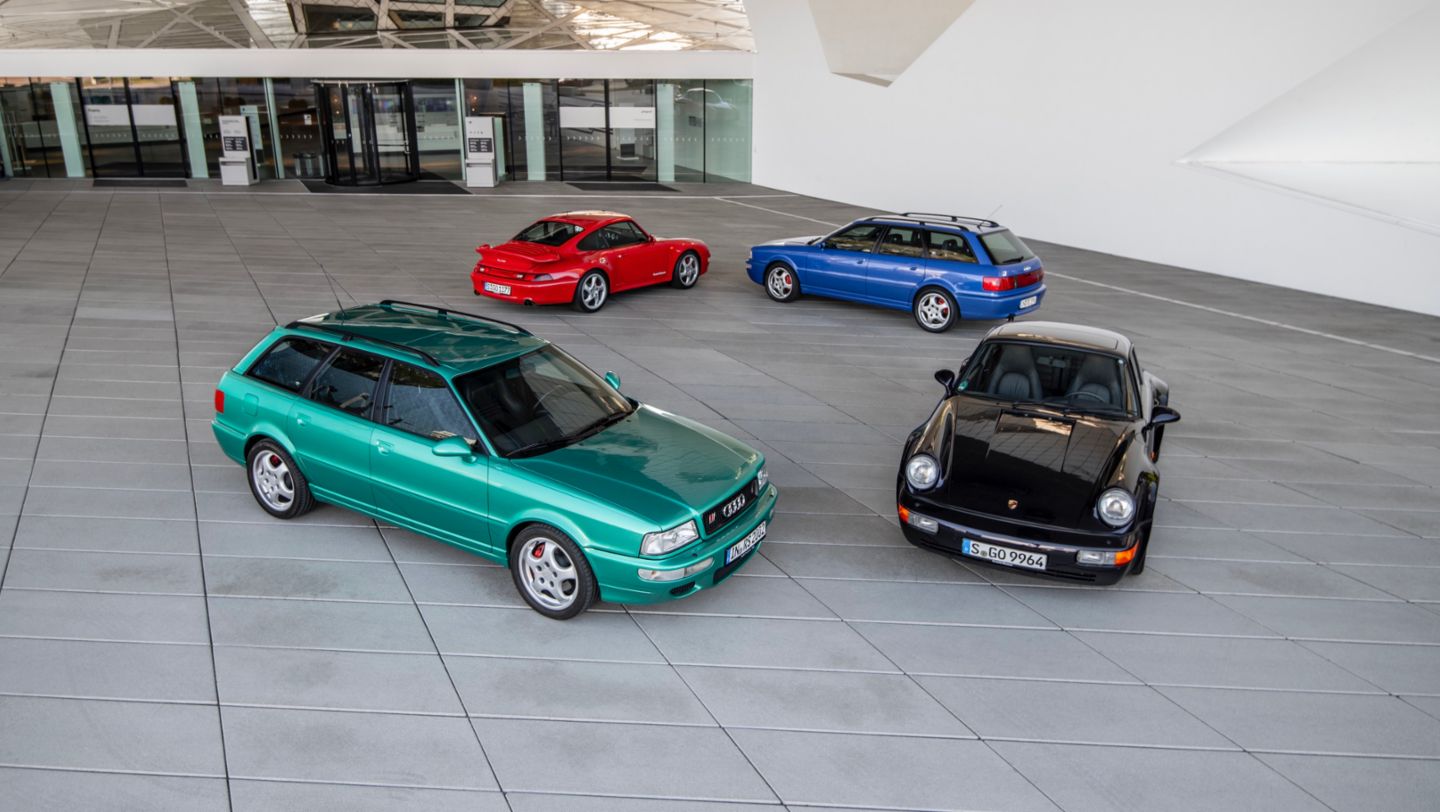
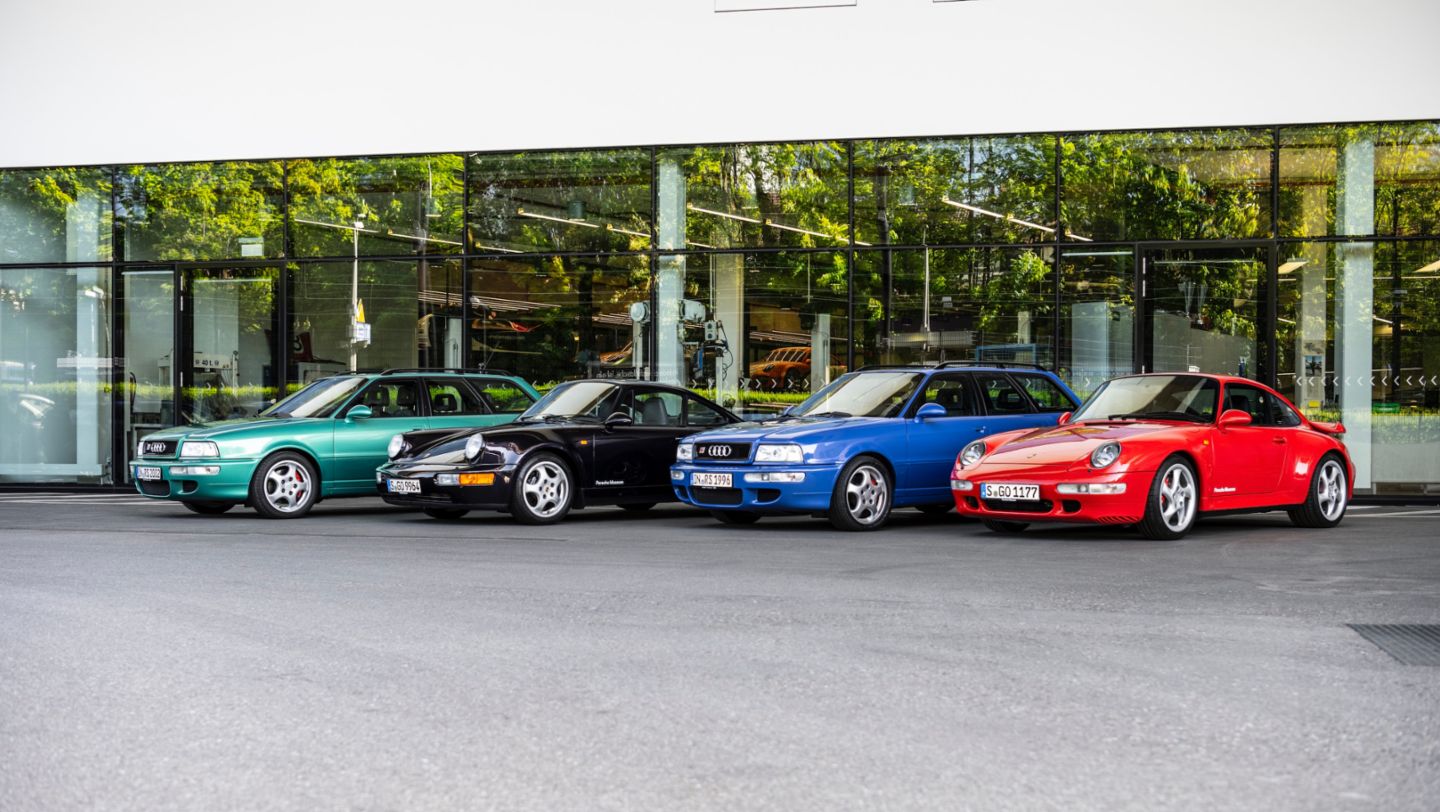
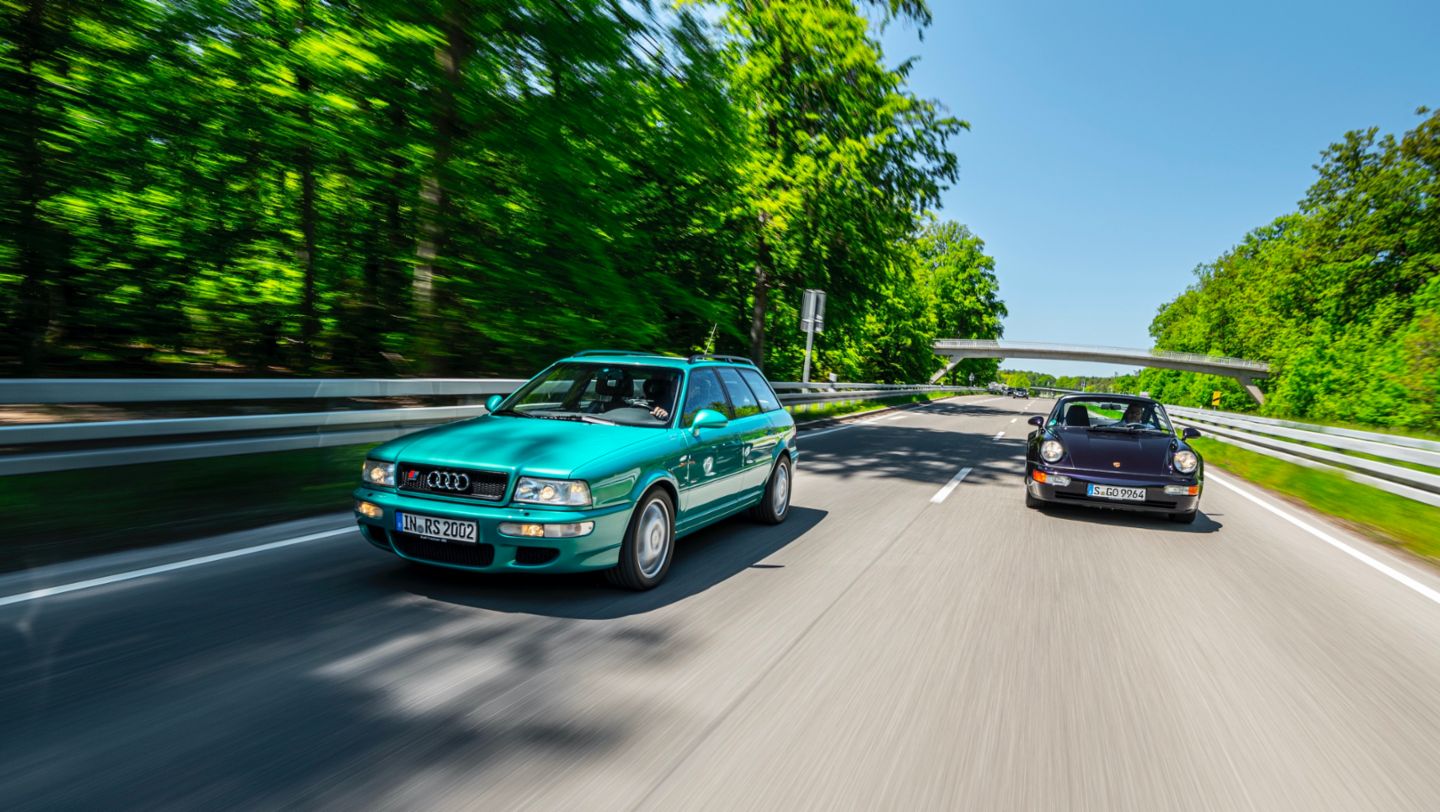
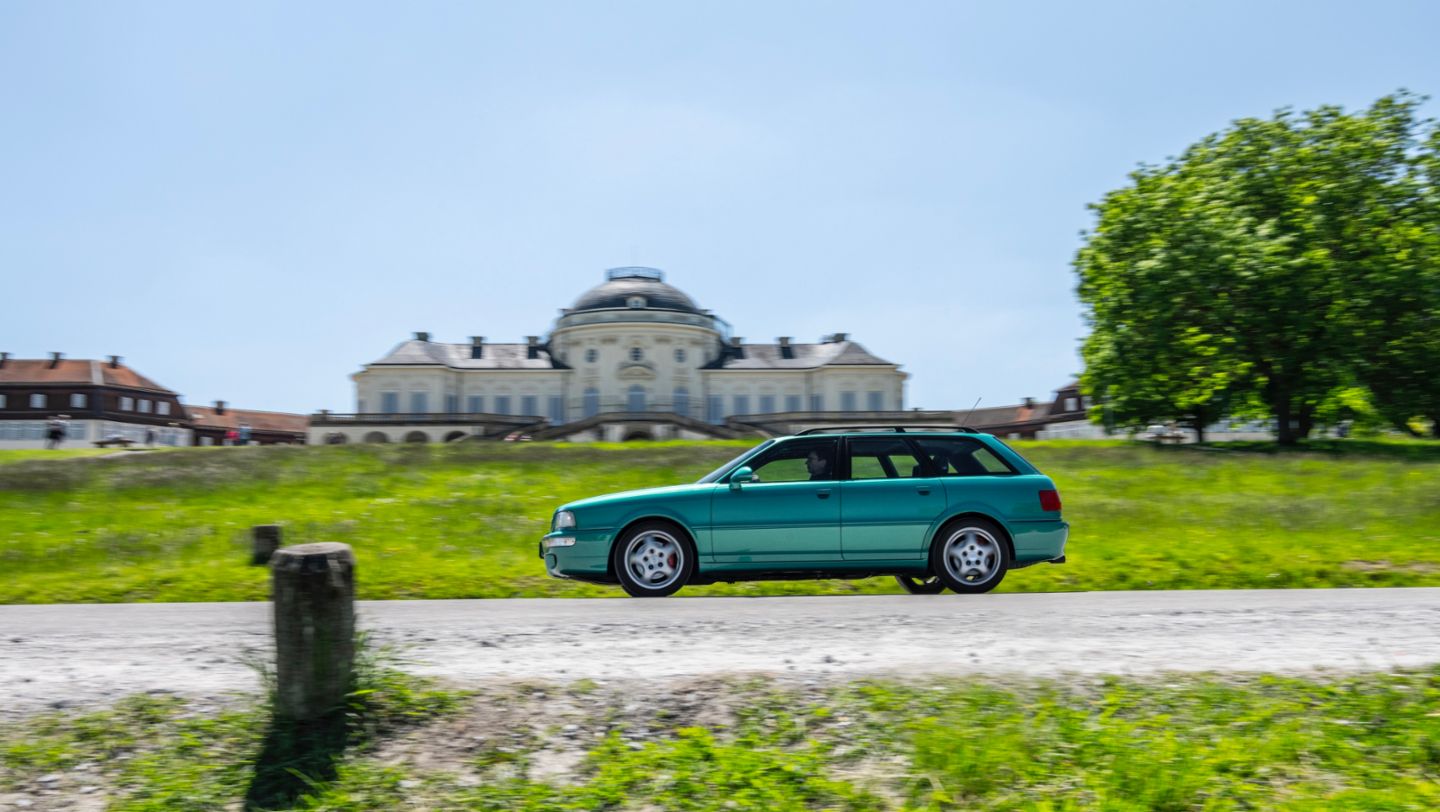
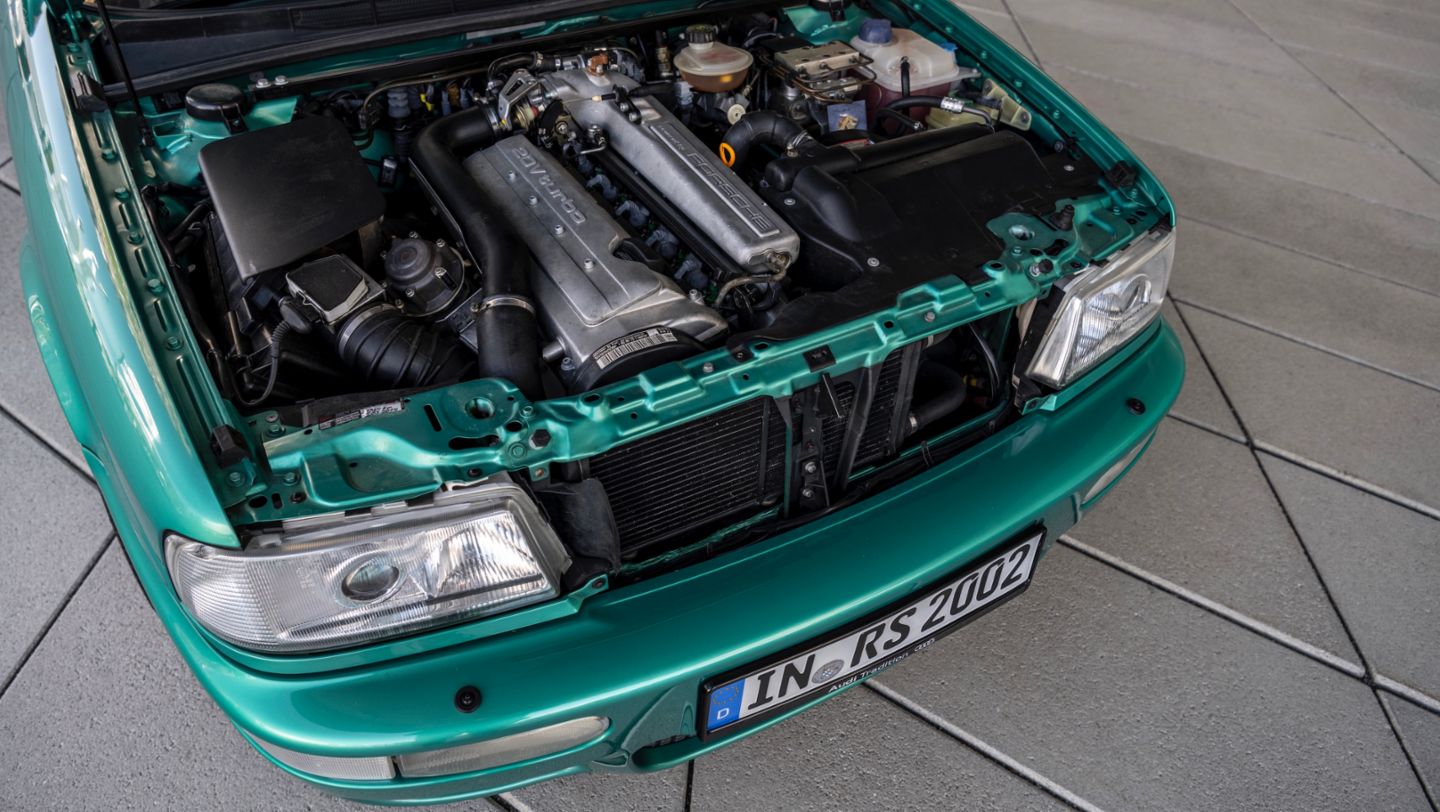
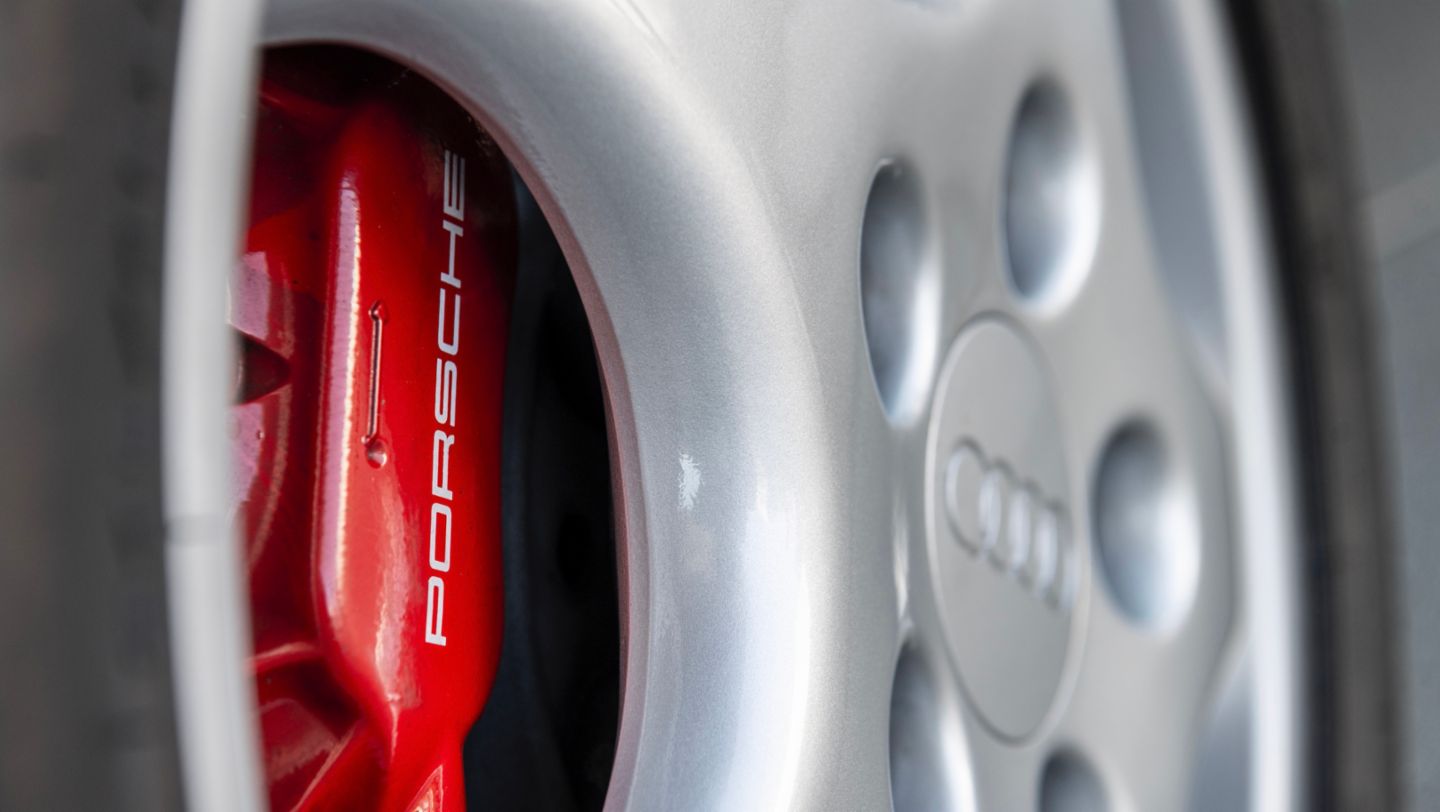
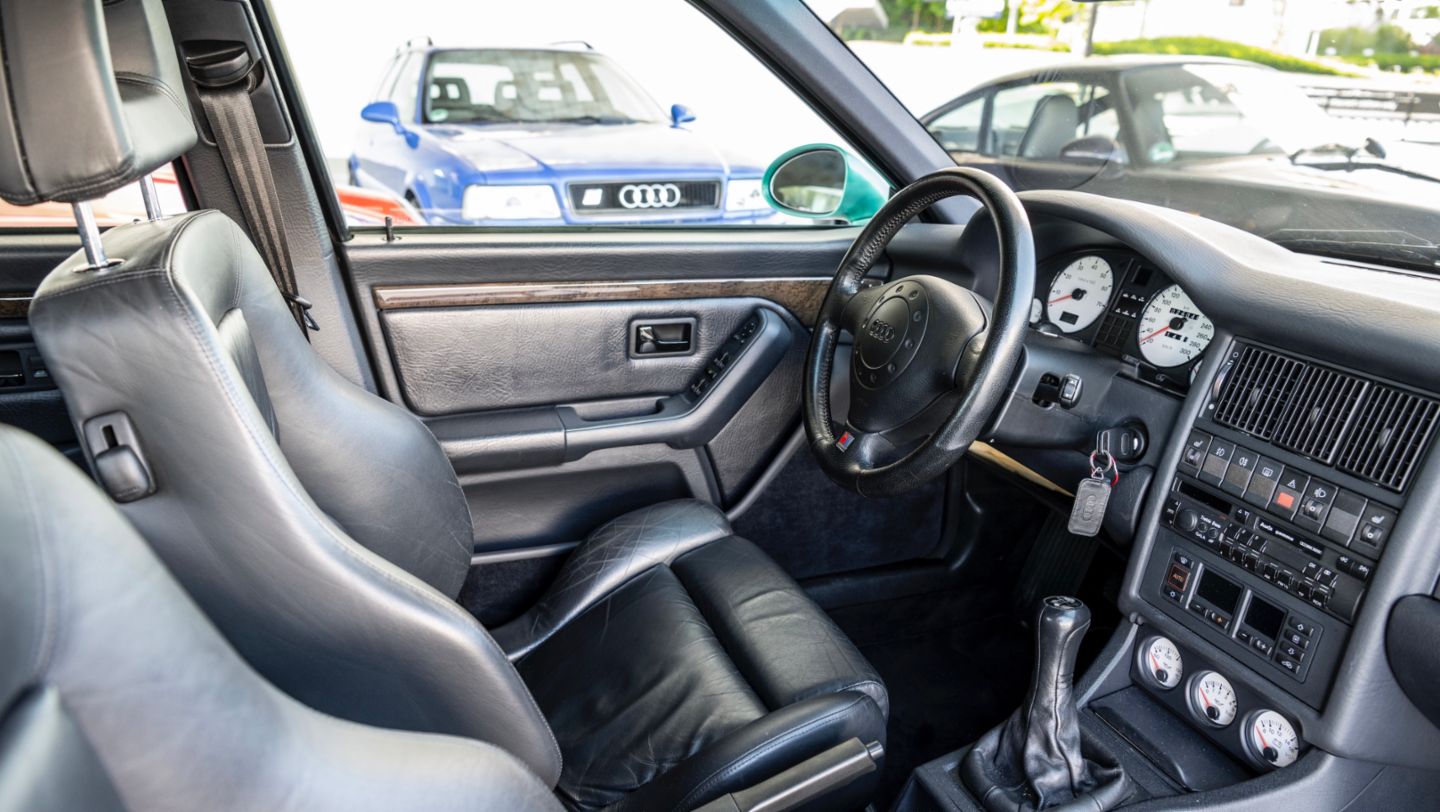
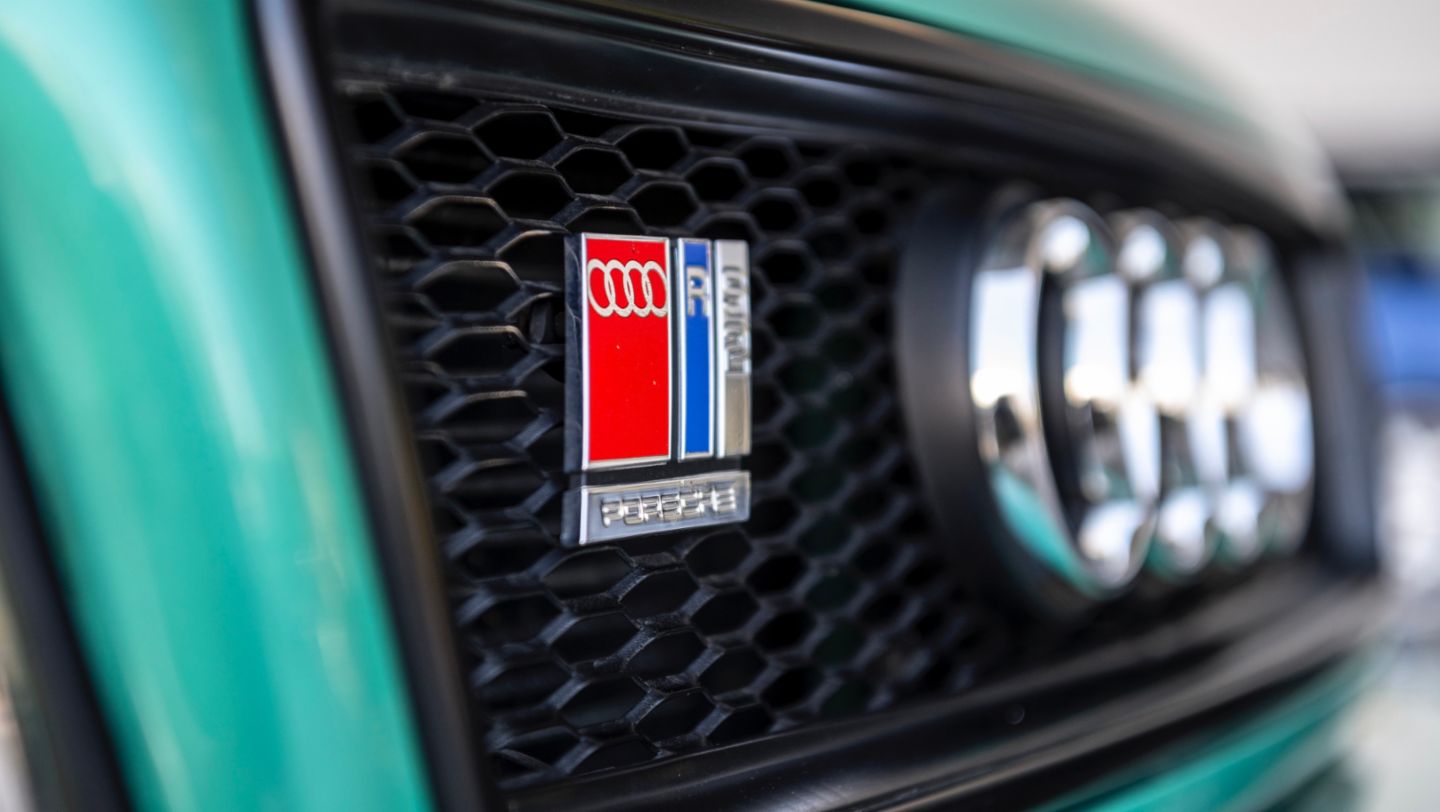
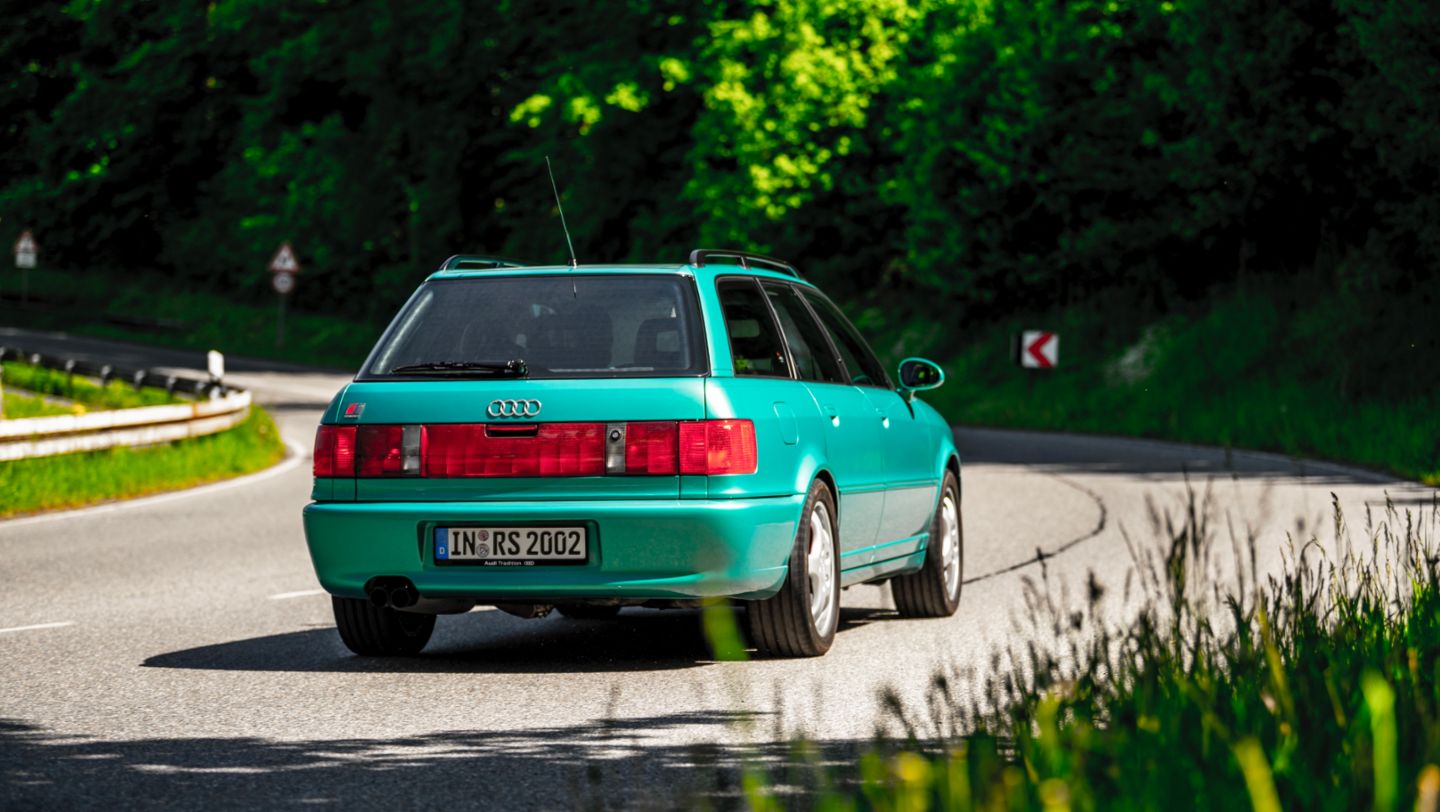
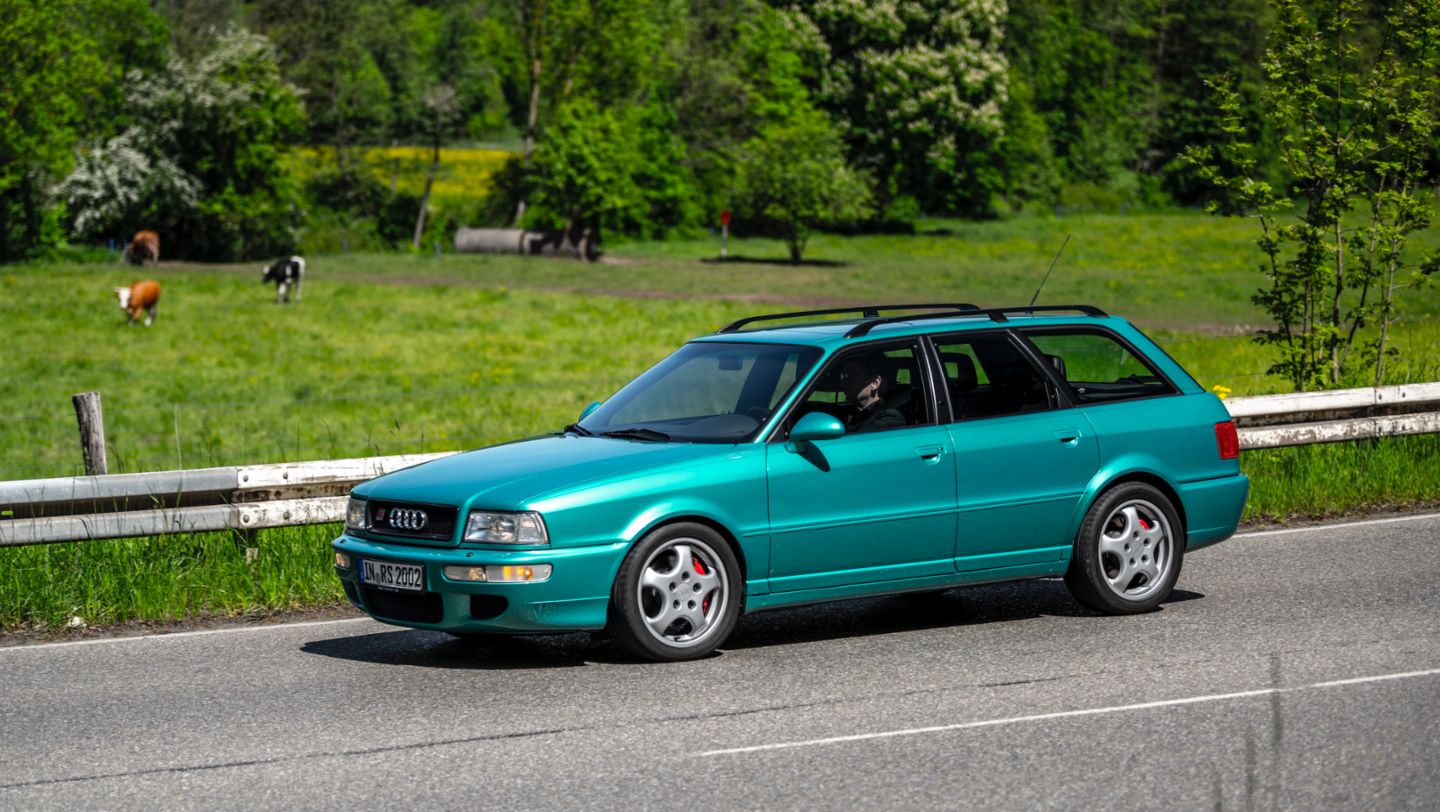
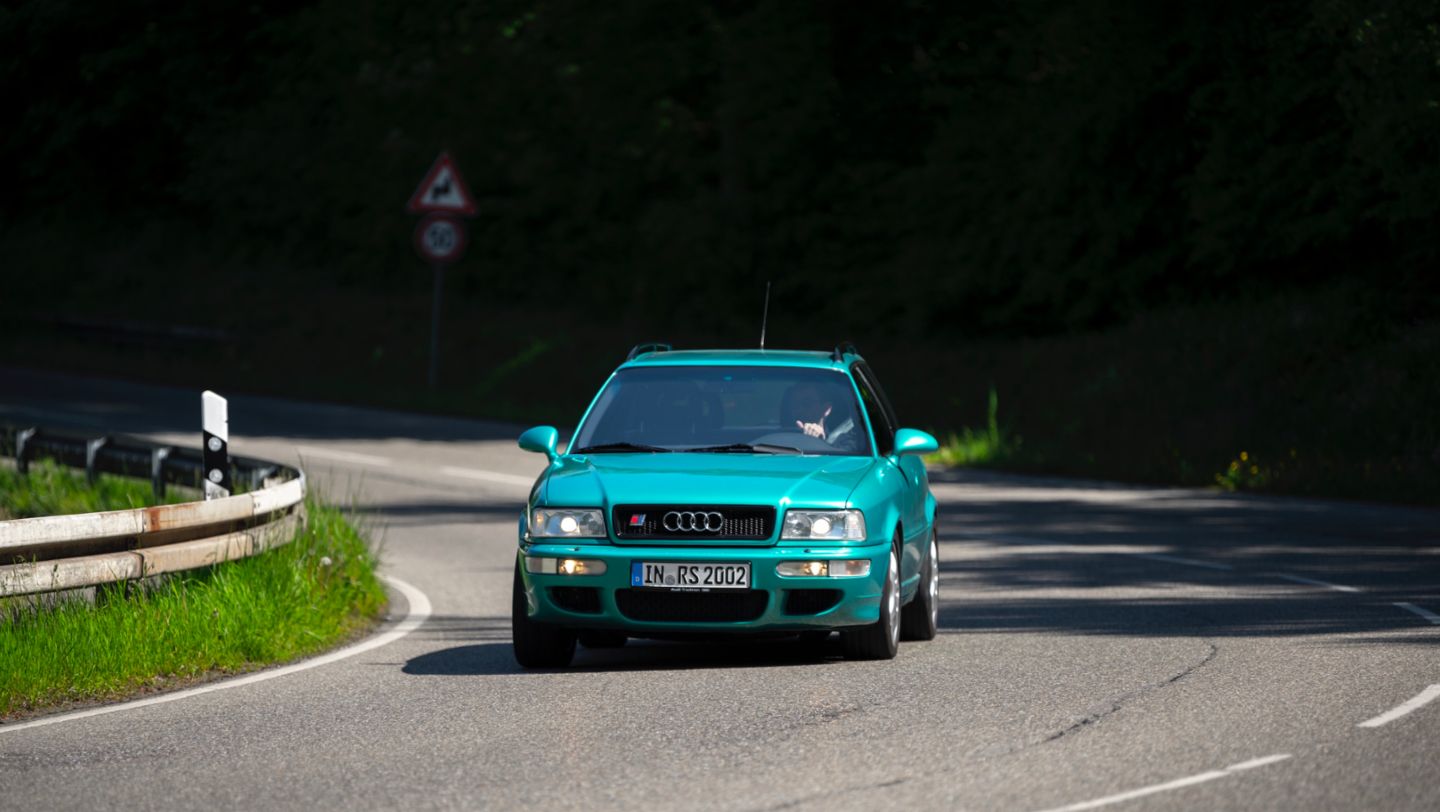

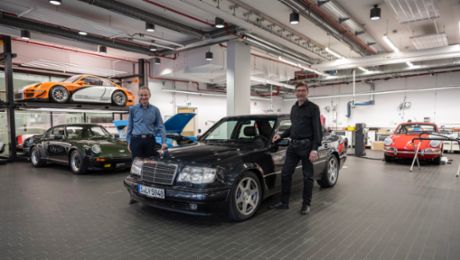
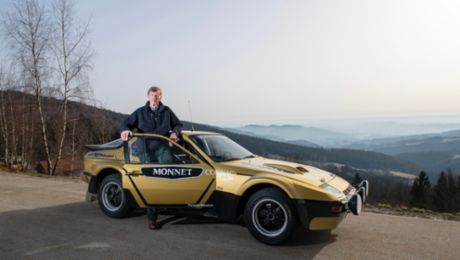
.jpg/jcr:content/A_Gr%C3%BCndung%20Konstruktionsb%C3%BCro%20(1931).jpg)
